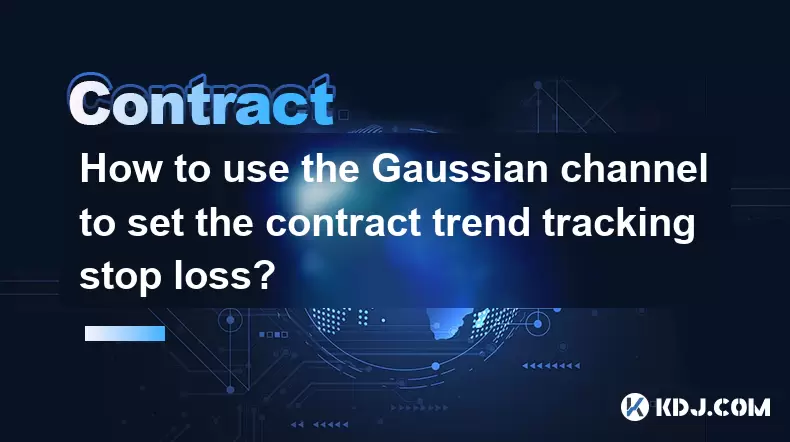-
 Bitcoin
Bitcoin $105,734.0170
-1.51% -
 Ethereum
Ethereum $2,414.7328
-3.26% -
 Tether USDt
Tether USDt $1.0002
0.00% -
 XRP
XRP $2.1748
-2.62% -
 BNB
BNB $647.5663
-1.72% -
 Solana
Solana $148.1710
-3.81% -
 USDC
USDC $0.9999
-0.01% -
 TRON
TRON $0.2799
-0.02% -
 Dogecoin
Dogecoin $0.1586
-4.17% -
 Cardano
Cardano $0.5440
-5.03% -
 Hyperliquid
Hyperliquid $37.0680
-6.59% -
 Bitcoin Cash
Bitcoin Cash $501.2052
-4.01% -
 Sui
Sui $2.6846
-3.47% -
 Chainlink
Chainlink $12.8488
-3.38% -
 UNUS SED LEO
UNUS SED LEO $8.9480
-1.51% -
 Avalanche
Avalanche $17.2059
-3.87% -
 Stellar
Stellar $0.2270
-4.75% -
 Toncoin
Toncoin $2.7889
-3.93% -
 Shiba Inu
Shiba Inu $0.0...01126
-1.76% -
 Litecoin
Litecoin $83.6893
-3.36% -
 Hedera
Hedera $0.1445
-4.49% -
 Monero
Monero $312.4014
-2.58% -
 Dai
Dai $1.0000
0.00% -
 Ethena USDe
Ethena USDe $1.0001
-0.01% -
 Polkadot
Polkadot $3.2920
-3.32% -
 Bitget Token
Bitget Token $4.4629
-1.81% -
 Uniswap
Uniswap $6.5386
-8.42% -
 Aave
Aave $260.3780
-6.01% -
 Pepe
Pepe $0.0...09308
-4.54% -
 Pi
Pi $0.4864
-3.04%
Principles of Coinbase leverage trading
Leverage trading on Coinbase amplifies profit potential but also increases risk, requiring careful risk management strategies such as stop-loss orders and diligent monitoring.
Nov 20, 2024 at 05:38 am

Principles of Coinbase Leverage Trading
Coinbase is a well-known cryptocurrency exchange that provides advanced trading options, including leverage trading. Leverage trading allows traders to borrow funds from the exchange to amplify their profits. However, it also increases the risk of losses, so it's crucial to understand the principles involved in leverage trading on Coinbase.
Step 1: Understanding Leverage
Leverage is a multiplier that magnifies the potential profits and losses in a trade. For example, a trader with 10x leverage can control a position worth $10,000 with only $1,000 of capital. If the trade moves in the trader's favor, the profit is amplified by the leverage multiplier. Conversely, if the trade moves against the trader, the losses are also amplified.
Step 2: Calculating Leverage
The leverage ratio is calculated by dividing the total position size by the trader's initial capital. In the example above, the leverage ratio is 10:1 ($10,000/$1,000). This means that the trader is using $1 of their capital to control $10 worth of the asset.
Step 3: Choosing the Right Leverage for You
The optimal leverage ratio depends on several factors, including the trader's risk tolerance, trading strategy, and market conditions. Beginners should generally avoid high leverage ratios, as they increase the risk of substantial losses. Experienced traders may consider higher leverage ratios to increase their potential returns, but they should carefully manage their risk.
Step 4: Funding the Leverage Position
To open a leverage position on Coinbase, you need to fund the account with sufficient margin. The margin is a deposit that acts as a safety buffer to cover potential losses. The required margin varies depending on the leverage ratio and the asset traded.
Step 5: Opening a Leverage Position
Once the account is funded, you can place a leverage trade by selecting the asset, the leverage ratio, and the order type (long or short). Long positions bet that the asset's price will rise, while short positions bet that the price will fall.
Step 6: Managing Risk during a Leverage Position
Managing risk is crucial during leverage trading. Here are some risk management strategies:
- Stop-loss orders: Set up automatic orders to close the position if the price moves against you by a certain amount.
- Trailing stop-loss orders: Move the stop-loss order continuously as the position moves in your favor to lock in profits.
- Margin calls: Coinbase may issue a margin call if your account balance falls below a certain level. You will need to deposit additional funds or close the position to avoid liquidation.
- Monitoring market conditions: Pay attention to key market indicators to anticipate potential price movements that could impact your leverage position.
Step 7: Closing a Leverage Position
To close a leverage position, place a trade in the opposite direction of the original position. For example, if you have a long position (betting on a price increase), you would close it with a short position (betting on a price decrease). The position is closed when the opposite positions offset each other.
Step 8: Leverage Trading on Coinbase
Coinbase offers leverage trading on select cryptocurrencies, including Bitcoin (BTC), Ethereum (ETH), Litecoin (LTC), and Bitcoin Cash (BCH). The available leverage ratios vary from 2x to 3x for retail traders and up to 50x for professional traders.
Key Points to Remember
- Leverage trading can amplify profits and losses.
- The optimal leverage ratio depends on the trader's risk tolerance and trading strategy.
- Risk management is critical to protect against substantial losses.
- Coinbase offers leverage trading on select cryptocurrencies with varying leverage ratios.
Disclaimer:info@kdj.com
The information provided is not trading advice. kdj.com does not assume any responsibility for any investments made based on the information provided in this article. Cryptocurrencies are highly volatile and it is highly recommended that you invest with caution after thorough research!
If you believe that the content used on this website infringes your copyright, please contact us immediately (info@kdj.com) and we will delete it promptly.
- Bitget Wallet's Fomo Thursdays: Big Wins and a 20% Winners Rate!
- 2025-07-02 16:50:12
- MAGACOIN FINANCE: The Altcoin Presale Turning Heads in the Crypto Scene
- 2025-07-02 16:55:12
- XRP, Escrow, and Token Management: A Deep Dive into Ripple's Strategy
- 2025-07-02 17:10:14
- Neo Pepe Ignites Crypto Rally: Analyst Predictions & The Memetrix Revolution
- 2025-07-02 17:15:12
- Dogecoin, Price Prediction, and Retail FOMO: What's the Hype?
- 2025-07-02 17:20:12
- Toncoin's Tightrope Walk: Chart Analysis and Bounce Potential
- 2025-07-02 17:50:17
Related knowledge

How to use the price slope to filter the false breakthrough signal of the contract?
Jun 20,2025 at 06:56pm
Understanding the Concept of Price Slope in Contract TradingIn contract trading, especially within cryptocurrency derivatives markets, price slope refers to the rate at which the price changes over a specific time period. It helps traders assess the strength and sustainability of a trend. A steep slope may indicate strong momentum, while a shallow slope...

How to determine the expected volatility of the contract through the volatility cone?
Jun 19,2025 at 12:28pm
Understanding the Basics of Volatility in Cryptocurrency ContractsIn the realm of cryptocurrency trading, volatility is a key metric that traders use to assess potential risk and reward. When dealing with futures contracts, understanding how volatile an asset might become over time is crucial for position sizing, risk management, and strategy developmen...

How to formulate a contract intraday trading plan in combination with the pivot point system?
Jun 21,2025 at 03:42pm
Understanding the Basics of Pivot Points in Cryptocurrency TradingPivot points are technical analysis tools used by traders to identify potential support and resistance levels. These levels are calculated using the previous day's high, low, and closing prices. In the context of cryptocurrency trading, where markets operate 24/7, pivot points help trader...

How to adjust the contract position ratio through the price fluctuation entropy?
Jun 22,2025 at 11:42am
Understanding Price Fluctuation Entropy in Cryptocurrency ContractsIn the world of cryptocurrency futures trading, price fluctuation entropy is a relatively new concept used to measure market volatility and uncertainty. It derives from information theory, where entropy refers to the degree of randomness or unpredictability in a system. In crypto contrac...

How to use the volume swing indicator to predict the contract volume-price divergence?
Jun 18,2025 at 11:42pm
Understanding the Volume Swing IndicatorThe volume swing indicator is a technical analysis tool used primarily in cryptocurrency trading to evaluate changes in volume over time. Unlike price-based indicators, this metric focuses solely on trading volume, which can provide early signals about potential market reversals or continuations. The key idea behi...

How to use the Gaussian channel to set the contract trend tracking stop loss?
Jun 18,2025 at 09:21pm
Understanding the Gaussian Channel in Cryptocurrency TradingThe Gaussian channel is a technical indicator used primarily in financial markets, including cryptocurrency trading, to identify trends and potential reversal points. It is based on statistical principles derived from the normal distribution, commonly known as the Gaussian distribution or bell ...

How to use the price slope to filter the false breakthrough signal of the contract?
Jun 20,2025 at 06:56pm
Understanding the Concept of Price Slope in Contract TradingIn contract trading, especially within cryptocurrency derivatives markets, price slope refers to the rate at which the price changes over a specific time period. It helps traders assess the strength and sustainability of a trend. A steep slope may indicate strong momentum, while a shallow slope...

How to determine the expected volatility of the contract through the volatility cone?
Jun 19,2025 at 12:28pm
Understanding the Basics of Volatility in Cryptocurrency ContractsIn the realm of cryptocurrency trading, volatility is a key metric that traders use to assess potential risk and reward. When dealing with futures contracts, understanding how volatile an asset might become over time is crucial for position sizing, risk management, and strategy developmen...

How to formulate a contract intraday trading plan in combination with the pivot point system?
Jun 21,2025 at 03:42pm
Understanding the Basics of Pivot Points in Cryptocurrency TradingPivot points are technical analysis tools used by traders to identify potential support and resistance levels. These levels are calculated using the previous day's high, low, and closing prices. In the context of cryptocurrency trading, where markets operate 24/7, pivot points help trader...

How to adjust the contract position ratio through the price fluctuation entropy?
Jun 22,2025 at 11:42am
Understanding Price Fluctuation Entropy in Cryptocurrency ContractsIn the world of cryptocurrency futures trading, price fluctuation entropy is a relatively new concept used to measure market volatility and uncertainty. It derives from information theory, where entropy refers to the degree of randomness or unpredictability in a system. In crypto contrac...

How to use the volume swing indicator to predict the contract volume-price divergence?
Jun 18,2025 at 11:42pm
Understanding the Volume Swing IndicatorThe volume swing indicator is a technical analysis tool used primarily in cryptocurrency trading to evaluate changes in volume over time. Unlike price-based indicators, this metric focuses solely on trading volume, which can provide early signals about potential market reversals or continuations. The key idea behi...

How to use the Gaussian channel to set the contract trend tracking stop loss?
Jun 18,2025 at 09:21pm
Understanding the Gaussian Channel in Cryptocurrency TradingThe Gaussian channel is a technical indicator used primarily in financial markets, including cryptocurrency trading, to identify trends and potential reversal points. It is based on statistical principles derived from the normal distribution, commonly known as the Gaussian distribution or bell ...
See all articles

























































































